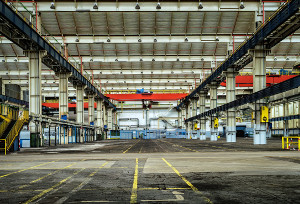Making the Strange Familiar and the Familiar Strange
Although the expression “Making the strange familiar and the familiar strange,” is not one we often hear, it is relevant to situations affecting human creativity, where the objective is to motivate people to a different approach interpreting things or solving problems. Attributed to the German poet Novalis (1772-1801), the expression is typical of the Romantic era, when artists sought mysterious qualities in well-known objects, while also seeking to identify recognizable, commonplace characteristics in the weird and extraordinary. In doing so, Romantics began a trend among the Western creative community that lasted thru the 19th century well into the 20th (the Surrealists).
And there is a lot of truth to the idea that expanding one’s point-of-view by comparing things is important for creativity. Because if your teapot has not yet talked to you (or at least winked), you may be very ready to seek unique features in what you might ordinarily consider average, unexciting, mundane.
We all realize the regular factors of life, and can readily separate “business” from “fairy tales,” “reality” from “fantasy.”
But is that all there is to existence? This question may seem to you irrelevant, not worth considering, but please try to give it some thought. Seeking the unusual may offer a new guideline useful, for instance, to conducting business.
“Why speak of business?” you might ask. Doesn’t it rely on the strictly practical for success manufacturing and distributing products and services? Where does the connection between familiar/strange enter into such an appraisal?
But remember Henry Ford devised the concept of assembly-line, conveyor-belt automobile production after observing the division-of-labor used for processing meat in a meat-packing plant. Until then, cars were constructed piece-by-piece in large gymnasium-like spaces; each unfinished vehicle was stationed alone of the floor. Autoworkers moved from one vehicle to another, dragging behind them a rattling cart filled with auto-parts they needed to attach to each unfinished car. The process was inefficient and costly.

In a burst of creativity, Ford observed meat-packers each cutting a section of meat (thigh, breast, liver) as it was moved to them overhead, and realized a similar same process could be applied to auto-manufacture. Autoworkers did not need to move-around; the car could be brought to them for assembly, via conveyor. He was inspired by events from a completely different industrial-field. Ford rendered the strange familiar, in that his unprecedented process rapidly became commonplace throughout manufacturing.
In contrast, “making the familiar strange” occurs when we seek to find new uses for something -- an object or human agency like a student organization or local environmental group -- whose function we generally take for granted. While others might not appreciate our response, the fact that an individual provided a different meaning or interpretation to the object in question can change other's outlook as well. This often-simple transition can be the source of extreme creativity.
A glass is a glass, but if we think about it as an unfamiliar object, what functions could we devise? Normally described as “a tool for drinking most liquids," are there other descriptions we can use? If we call it “a lump of glass with a certain volume” it can be used, for example, as a paperweight or at the end of a shelf as a bookend for paperbacks (especially if filled with colored-sand). And, if filled with colored-sand might it not also be a “molded sculptural work of art(??),” as well as a bookend and a glass?
Another example occurs with Korean rice bowls created 300-500 years ago. Everyday items at the time they were made, the bowls were typically fired in batches of about 10. Today, they are extremely valuable, but the people using them in their original form were mostly poor, unlanded peasants. With little in the way of material possessions, they found applications for the bowls that far exceeded their original function as dinner service.
Perhaps the bowls were used to hold coins, or water, or flower petals floating in water, among many other potential applications. None of these uses are really outstanding but they do demonstrate ”making the familiar strange,” and also establish how personal creativity can emerge to solve small problems when the necessity arises.
This variety of functional treatments at first made the "familiar strange," because new ways of employing the bowls took an ordinary object and gave it a unique purpose. However, in time, the reverse occurred; that is, the "strangeness" of the bowl’s new uses became "familiar" to all who regularly engaged the formerly unique applications for the object. In both these cases, a familiar object was provided new uses and identity that transcended its designated function, the purpose for which it was originally made. Creativity develops by changing things around!!
Learn More:
